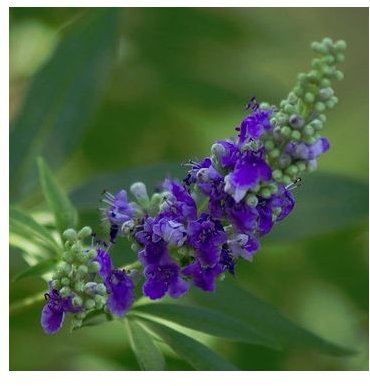Benefits of Chasteberry Tree Extract for Women
Chasteberry is the fruit of a small shrub-like tree called the chaste tree (Vitex agnus castus). The tree is native to southern Europe and the Mediterranean region, has lance-shaped leaves and purple flowers. The fruit, about the size of peppercorns with a peppery aroma and flavor, have been used for more than 2,500 years as a remedy for various female conditions. Chasteberry was traditionally used to promote chastity as it was thought to decrease sexual desire, hence its name, and was commonly used by wives of soldiers in battle. Although it is not considered an anti-aphrodisiac, it is believed to balance hormone levels in women, which in turn increases libido in those who have no desire and decreases libido in those with an overly abundant desire. Today, the German Commission E has approved the extract for the treatment of premenstrual syndrome (PMS) and menstrual irregularities.
What Studies Show
PMS
According to one double-blind, placebo-controlled study involving 170 women with premenstrual syndrome, chasteberry was shown to be an effective and well tolerated treatment for PMS symptoms. Symptoms included mood alteration, irritability, bloating, breast fullness and headache, among others. Eighty-six women received one Vitex agnus castus L extract Ze 440 tablet daily over three consecutive menstrual cycles and 84 received a placebo. Those who took Vitex had a significant reduction in symptoms compared to those who took the placebo. Four women taking the extract and three taking the placebo reported mild side effects, none of which caused them to discontinue their treatment.[1]
Amenorrhea
One cause of amenorrhea, an abnormal absence of menstruation, is increased levels of prolactin, a gonadotropic hormone. Chasteberry has been shown to reduce high levels of prolactin in animals, and according to one small study, 10 of 15 women who took a liquid extract of Vitex agnus castus every day for six months began having a normal period. Vitex has also been shown to raise luteinizing hormone levels and subsequent levels of progesterone in women with luteal phase defect, which can lead to amenorrhea and other menstrual cycle abnormalities.[2]
Precautions
Possible side effects include minor stomach upset, acne-like rashes, itching and dizziness.
Women who have a hormone-sensitive condition, such as breast cancer, or who are pregnant, breastfeeding or taking birth control pills should avoid taking chasteberry tree extract.
If you have a medical condition or are taking medications, consult your health care provider before using.
Preparations
Tablets, capsules and liquid formulations are available. You can also buy tea bags or prepare your own cup of chasteberry tea by pouring 1 cup of boiling water over 1 teaspoon of dried berries and steeping for 10 minutes.
References
3. National Center for Complementary and Alternative Medicine: Chasteberry
Photo by nègFoto / Flickr
Disclaimer
Please read this disclaimer regarding the information contained within this article.
